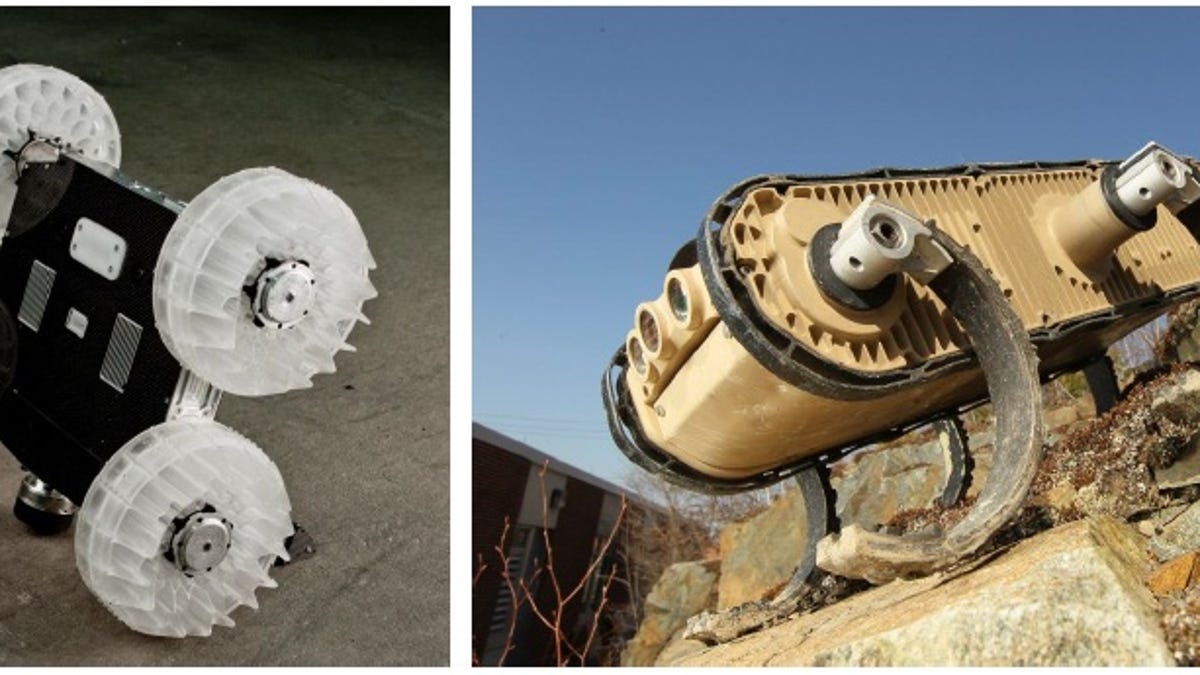Army starts testing bots inspired by sand fleas, roaches
These insect-like recon robots from Boston Dynamics are set to be deployed to Afghanistan for more testing.

Boston Dynamics, creator of the very awesome BigDog and a menagerie of other bots, is sending two small reconnaissance robots to the U.S. Army for testing.
Sand Flea and RHex, developed with funding from the Army's Rapid Equipping Force, are off to the Army Test and Evaluation Command (ATEC) to pass safety and reliability assessments.
Three RHex units have already been delivered to ATEC and Sand Fleas will join them later this year, Boston Dynamics said in a release. The machines could improve soldiers' awareness of threats in war zones.
RHex is a six-legged, 30-pound crawling bot inspired by cockroaches. It squirms around through mud, streams, and rocky terrain, going up to six hours on a battery charge.
Controlled by an operator up to 650 yards away, it can also tackle slopes, stairs, and swim underwater while relaying video of its surroundings.
As its name implies, Sand Flea loves to jump around. It can leap up to 30 feet over obstacles when it's not rolling on its four wheels. It weighs 11 pounds and can jump 25 times per charge.
That capability gets it over walls and onto building rooftops. When it's flying, a gyro stabilization system helps it land smoothly and keep its camera level for surveillance images.
The Rapid Equipping Force is slated to deploy nine Sand Fleas and four RHex robots to Afghanistan for further testing once they complete ATEC trials.
They will join a growing army of over 2,000 robots in Afghanistan that's being used for bomb disposal, at security checkpoints, and for classified ops.
Demand for robots in the decade-old war shows no signs of abating.

